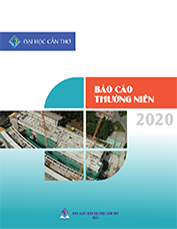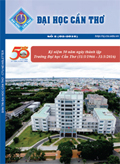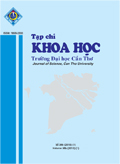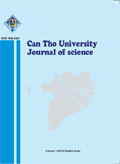ABSTRACT
This paper devotes to analyze social and economic efficiency of the avoid-blood residential zones (ABRZ) in AnGiangprovinceand Can Tho city by employing the pre-post comparison and the DID methods (difference in differences). The empirical results indicate that after resettling at ABRZ, the number of the landless households, the off-farm labor and the rate of unemployment in the ABRZ increase. However, the land size per household, on-farm labor, and the income of the household decrease sharply. Moreover, the income of household (treatment group) in ABRZ decreases to compare to that of household (control group) in the out of the ABRZ. After settling at ABRZ, the living conditions of the households are improved significantly (education, social activities, health services).
Keywords: residential zones, blooded area, Mekong Delta
Tile: Analyzing socio-economic efficiency of the avoid-blood residential zones in Angiang and Cantho provinces
TóM TắT
Nghiên cứu tập trung đánh giá kết quả kinh tế - xã hội tại các khu dân cư vượt lũ (KDCVL) tại tỉnh An Giang và Tp. Cần Thơ theo phương pháp so sánh trước ? sau (pre-post comparison method) các chỉ tiêu về kinh tế-xã hội của hộ dân trước và sau khi đến định cư tại các KDCVL và phương pháp DID (difference in differences method) để so sánh các chỉ tiêu kinh tế - xã hội giữa các hộ dân định cư trong và ngoài KDCVL. Kết quả phân tích cho thấy, sau khi vào KDCVL, số hộ dân không đất sản xuất tăng, quy mô đất sản xuất giảm, cơ cấu lao động chuyển dịch theo hướng tăng tỷ lệ lao động ngoài nông nghiệp, giảm lao động trong nông nghiệp và tăng tỷ lệ người không có việc làm. Thu nhập của hộ giảm nhẹ so với trước khi vào KDCVL. Thu nhập của hộ trong KDCVL giảm so với hộ định cư ngoài KDCVL. Sau khi vào KDCVL, hộ dân có điều kiện tiếp cận với các dịch vu y tế, giáo dục, văn hoá và xã hội tốt hơn trước đây.
Từ khóa: khu dân cư, khu dân cư vượt lũ, đồng bằng sông Cửu Long






